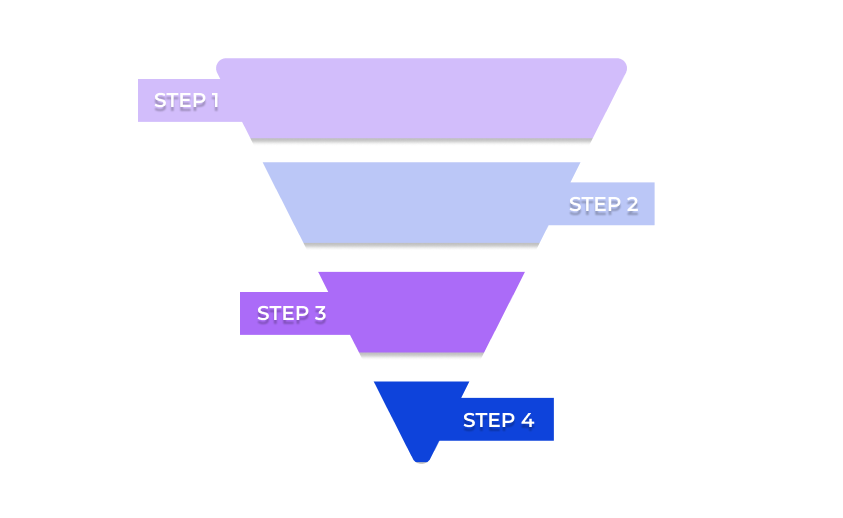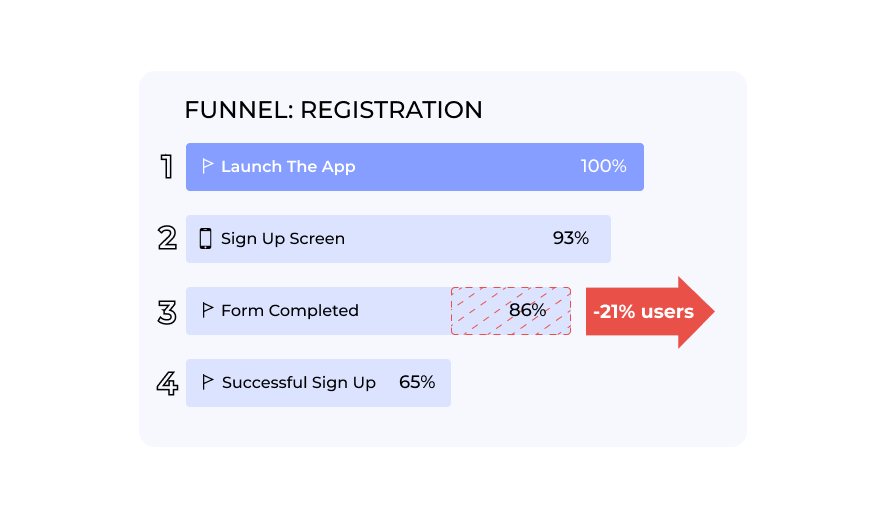Table of Contents
- Mastering Conversion Funnel Analysis in Mobile Apps
- Decoding User Behavior with Funnel Analysis
- The Essence of Funnel Analysis in Mobile Apps
- From Awareness to Conversion: The Funnel Perspective
- Using Funnels to Elevate App Performance
- An Exemplary Case: The UserX Story
- A Glitch in the User Experience: A Case Scenario
- Embarking on a Fruitful Funnel Analysis Endeavor
- Wrapping Up
- FAQs
Decoding User Behavior with Funnel Analysis
A funnel stands out as an indispensable tool for comprehending user behavior and tracing their journey towards a definitive goal. In marketing and sales domains, the aim is often to turn website visitors into loyal customers. However, within the mobile app environment, the spotlight is on achieving goal completion. Delving into conversion funnel analysis empowers developers with crucial insights, shaping user experience and enhancing engagement levels.

The Essence of Funnel Analysis in Mobile Apps
Analyzing funnels is pivotal when gauging mobile app performance. It's essential for understanding how users interact and engage with your app. If you're dedicated to perfecting user journeys and experiences, embracing conversion funnel analysis is the way forward.
From Awareness to Conversion: The Funnel Perspective
Imagine the marketing funnel as a depiction of the customer's voyage, beginning with awareness and culminating in a purchase. This journey initiates with a vast audience, gradually narrowing down to the select few who finalize their purchase. Crafting a user experience so fluid that it feels beyond the bounds of a funnel is the ultimate aim, although challenging, it's key for nurturing lasting customer ties.
Using Funnels to Elevate App Performance
The funnel serves as your guide, illuminating the intricate facets of your app users' behavior. This illumination assists in discerning if users execute the intended actions, from mere clicks to sign-ups or purchases. Examining this behavior reveals potential roadblocks users might encounter. More importantly, it equips you to make data-driven decisions, refining app performance and intensifying user engagement.
An Exemplary Case: The UserX Story
For a tangible grasp, consider UserX, a UX analytics platform. "Conversion Funnels" feature allows developers to precisely identify stages causing user drop-offs, thus exposing churn causes. Moreover, app designers can review session recordings to pinpoint and remedy identified issues, promising revenue boosts.

A Glitch in the User Experience: A Case Scenario
Upon releasing their app's latest version, a notable client detected a concerning downturn in sign-up conversions. Through funnel analysis, it became evident that users halted registration at its concluding step. Surprisingly, even with all vital registration elements presented, completion remained elusive. A deeper dive into session recordings unveiled an off-screen “Create account” button on specific Android devices, leading to a 10% plummet in conversions. Addressing this oversight rejuvenated the conversion rates.

Embarking on a Fruitful Funnel Analysis Endeavor
Begin by meticulously outlining the user journey you aim to monitor. Dedicate time to strategizing the most fitting pathways and the quintessential user journey, ensuring goal attainment. With clear goals etched for each envisioned funnel, you're set to adopt the ideal software tool for data capture and assessment.
Wrapping Up
By harnessing the might of funnels, you can redefine your grasp on user behavior within the mobile app spectrum. With steadfast application, funnels promise to reveal rich insights, fueling innovative strategies for your app’s enhancement.
FAQs
1. What is conversion funnel analysis?
Conversion funnel analysis is the technique of studying user behavior as they navigate through stages within a system, such as a mobile app, aiming to accomplish a particular goal.
2. Why is funnel analysis crucial for mobile apps?
It offers developers a lens to see where users might be facing challenges or dropping off, thus providing opportunities for targeted enhancements in user experience and boosting conversions.
3. Can funnel insights shed light on specific user behavior anomalies?
Absolutely! For instance, if users consistently abandon a sign-up process at a specific stage, funnel analysis can spotlight this issue, prompting an in-depth investigation into its cause.



